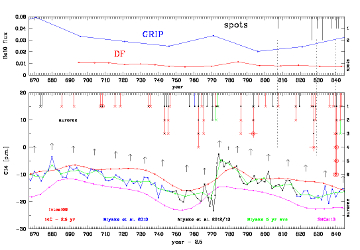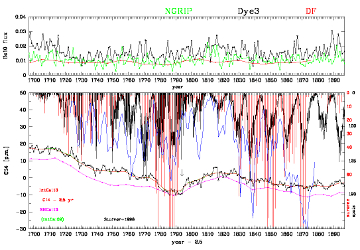C-14 variation around AD 775 due to solar activity drop
 |
 |
|
During the years of the C-14 variation around AD 775 (left, arrows show C-14 maxima as Schwabe cycle activity minima), there were no strong aurorae observed; C-14 rises for a few years and remains high afterwards, so that the rise could be due to a fast strong drop in solar activity: less solar wind leads to more cosmic rays entering the solar system and forming C-14 at Earth. The same effect (but less strong) could have happened at around AD 1795 (right, with monthly sunspot numbers in black and yearly aurorae in red and blue, from top to bottom, scale at the right) at the sudden start of the Dalton Minimum.
|
More on our project on the Terra-Astronomy web site.
Source: Neuhäuser & Neuhäuser (2015): Variations of 14C around AD 775 and AD 1795 – due to solar activity, Astron. Nachr. 336, 930-954
http://adsabs.harvard.edu/abs/2015AN....336..930N


